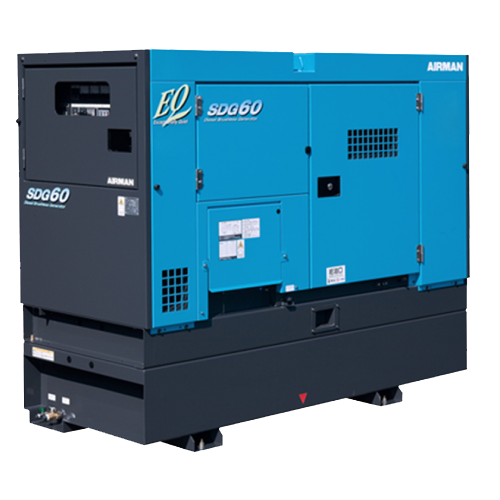Diesel Generator

A diesel generator, also known as a DG set or diesel genset, is a power-generating unit that uses a diesel engine to drive an electric generator, converting mechanical energy into electrical energy. It’s a vital backup power source in various settings, including residential, commercial, and industrial applications.
Key Components and Function
This is the prime mover, burning diesel fuel to produce mechanical energy (rotational motion).
This device converts the mechanical energy from the engine into electrical energy (AC power) through electromagnetic induction.
Working Principle:
- Combustion: Diesel fuel is injected into the engine’s combustion chamber, ignited by the heat of compression, and the expanding gases force the piston down, turning the crankshaft.
- Mechanical Power: The crankshaft’s rotational motion drives the generator’s rotor.
Electrical Generation: As the rotor spins, it induces an electric current in the stationary coils of wire (stator), generating electricity.
Senci Portable Generator-SK4500E-3 KVA with ATS
Weichai WPG33L1 Diesel Generator – 30 KVA
YorPower Diesel Generator YTP100RSC – 100 KVA / 110 KVA
Himoinsa Diesel Generator HSY-25 T5 – 21 KVA/25 KVA
YAMAHA Generator-EF6300iSE-5.5kVA
AMAHA Petrol Generator EF7200E 5kVA
Common Uses
Backup Power
Provides electricity during grid outages, ensuring continuity of operations in critical facilities like hospitals, data centers, and businesses.
Remote Locations
Supplying electricity where grid infrastructure is unavailable or unreliable.
Industrial Applications
Powering machinery, tools, and equipment in construction, manufacturing, and mining.
Emergency Situations
Providing power in disaster scenarios, natural disasters, or other emergencies.
Residential Power
Serving as backup power for homes during power outages.
Advantages
Reliability
Diesel engines are known for their durability and reliability.
Power Output
Available in various sizes and configurations to suit different power needs.
Efficiency
Diesel engines generally have high thermal efficiency, allowing them to convert a significant portion of fuel energy into power.
Long Run Time
Diesel fuel can be stored for extended periods, making it suitable for long-duration backup power needs.
